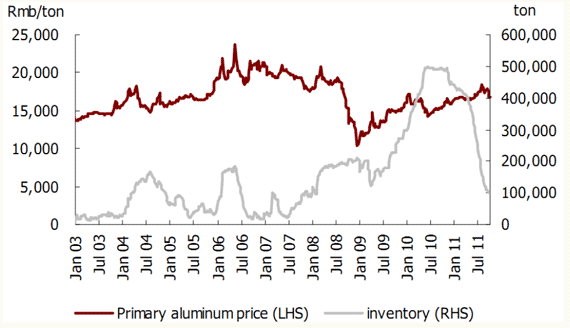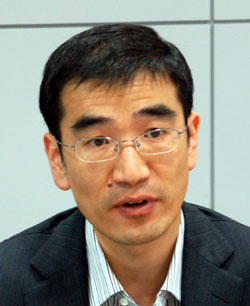
SALES AT aluminum smelter Xinren, which is listed on the Singapore Exchange, contracted 7.2% in 3Q2011 to Rmb 1.5 billion as China’s austerity measures to cool its over-heated economy took effect.
Yet Xinren managed to clock profit before tax growth of 10.4% to Rmb 113.1 million, thanks to an increase in government subsidies.

In 3Q2011, it received government subsidies amounting to Rmb 11.0 million, more than triple what it got in the previous quarter.
This came from a one-off subsidy for the technology upgrade of production plants and on-going subsidies for its electricity bill.
Profit before tax margins improved by 1.2 percentage points to 7.6%, and net profit attributable to shareholders was Rmb 95.5 million.
Its plants utilize energy-efficient and environmentally friendly technology for the production of high quality primary aluminum.
70% of the company’s 3Q2011 revenue came from smelting of primary aluminum and selling them in the form of ingots and plates.
8.8% came from fabricating ingots into products such as sheets, coils and foils. Another 21.2% was from trading of aluminum products, primary aluminum and alumina (feedstock for the former).
China’s economy activity during 3Q2011 moderated to its slowest pace in more than two years, when its GDP growth of 9.1% was the slowest since early 2009 (2Q2011: 9.5%).
“The austerity curbs are taking effect but we believe that China’s manufacturing economy is still strong,” said Mr Liang Hongbo, executive director, at Xinren’s results briefing on Wed.

Due to austerity measures, the nation's producer price index (PPI) rose 5% year-on-year in Oct, easing from a growth of 6.5% in Sep.
“We believe the Chinese government will not roll out any more austerity measures, especially when the US and Europe's economic outlook is uncertain,” said Mr Liang.
He points out that aluminum inventories are still declining, and deduces that the strong demand for aluminum indicates strong economic activity, since aluminum is a raw material which is in common use.
Demand factors in place
"We are very confident of the demand for aluminum," said vice president, Ms Li Yazhou.
Aluminum demand remains robust, driven by its applications in the manufacture of automobiles, power supply and electronics and other consumer goods.
In developed countries like America, per capita annual consumption of aluminum exceeds 20kg, compared with about 10kg in China. There is a lot of room for growth in demand for aluminum as China is still urbanizing.
Secondly, there is a trend of using it as a replacement for copper and steel. Aluminum is an environmentally-friendly metal, as its production and usage consumes relatively less energy, causes less pollution and is more easily recycled. It is also more aesthetically appealing.
For example, aluminum is lighter than steel, so its wider use in the automotive industry will make cars much more efficient. A kilo of aluminum, used as a substitute for heavier metals in car industry, reduces gas consumption by 8.5 litres and produces 20 kg less carbon dioxide emissions. A 10% reduction of car weight results in a 9% increase of fuel consumption efficiency.

Below are some questions raised at Wed’s results briefing and a summary of replies by Ms Li, Mr Liang and group financial controller, Ms Lim Joo Seng.
Q: Why have aluminum prices eased off in recent months when inventories are dropping sharply?
Some traders hold back on their supplies when prices soften.
Q: In some parts of China, there are serious electricity shortages. Are you similarly affected?
The problem varies with geography. We don't face such problems where we are. We are expecting stable energy costs next year. Iron and steel mills are slowing down and energy supply in China is actually huge. Energy costs are likely to remain stable if coal prices are stable.
Q: Why did you enter long-term contracts for your alumina feedstock when not everyone in the industry does that?
We locked in a 5-year contract during the global financial crisis because we felt it was rare to have prices as low as 17.1% of 3-month Shanghai Futures Exchange prices. Alumina cost ranged from 16.8% to 28.8% over 2002 to 2009.
Q: Are you still continuing discussion to build the 100k ton smelting plant in Heilongjiang?
The government policy there is very strict. So far, we have not made any progress for this.
Related story: XINREN Grows 1Q2011 Revenues 57% To Rmb 2 Billion But Profits Dented By Cost Pressures
